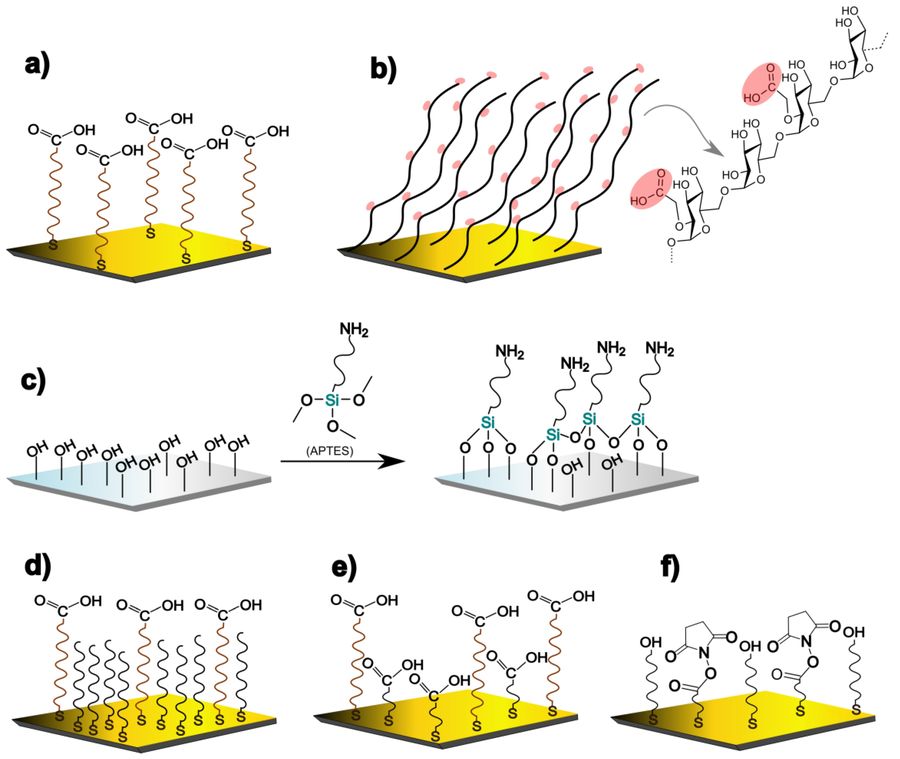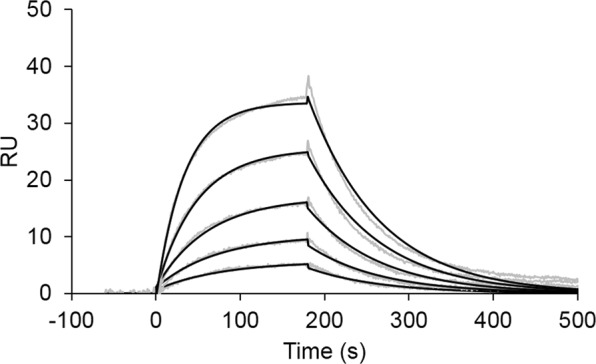SPR based Detection Service
Accelerate Your Antibody Development!
Are you encountering prolonged analytical durations, compromised target selectivity in carbohydrate profiling, or difficulties in resolving immunoglobulin-glycan binding dynamics? Creative Biolabs' SPR-driven Glycan-Antibody Interaction Analysis Service enables precise mapping of molecular recognition events, uncovers innovative disease indicators, and propels your investigations through plasmonic resonance detection systems.
Contact our team to get an inquiry now!
Background
Over the past ten years, plasmonic sensing systems have evolved as label-free analytical platforms for liquid-phase analyte detection. The excitation of surface plasmons through photon-gold interface interactions generates quantifiable optical shifts proportional to surface-bound ligand concentrations, enabling precise monitoring of adsorption dynamics and molecular binding events. Compared to conventional immunoassays like ELISA, SPR-based analytical platforms demonstrate three key advancements:
- Accelerated assay timelines with enhanced molecular discrimination and nanoscale sensitivity
- Capacity for multi-step interaction profiling and antibody affinity characterization
- Elimination of fluorescent/radioactive labeling requirements with real-time binding visualization
 Fig.1 Chemically modified gold surfaces for SPR experiments.1,3
Fig.1 Chemically modified gold surfaces for SPR experiments.1,3
Anti-Glycan Antibody SPR Detection
Surface plasmon resonance (SPR) demonstrates exceptional effectiveness for analyzing and screening glycan-targeting antibodies. Glycan architectures can be immobilized on biosensing interfaces to determine antibody binding profiles, measure interaction strength and immunoglobulin concentrations, and analyze dynamic binding parameters. Plasmonic glycan screening platforms can be developed from chemically synthesized or biologically sourced carbohydrates—either purified or blended—supporting exhaustive antibody profiling or pathological marker discovery. These arrays feature varied glycan antigenic motifs or structural subunits organized in defined geometric patterns, enabling standardized large-scale analysis.
Published Data
 Fig 2. Kinetic analysis of the interaction between fucosylated AFP and FasMab.2,3
Fig 2. Kinetic analysis of the interaction between fucosylated AFP and FasMab.2,3
This investigation established FasMab, a new monoclonal antibody demonstrating selective binding for fucosylated alpha-fetoprotein (AFP). Methodology involved murine immunization with fucosylated AFP, succeeded by hybridoma generation methodology to create antibody-secreting clones. Stringent selection identified clones producing antibodies reactive solely to fucosylated AFP, excluding non-fucosylated isoforms. Surface Plasmon Resonance (SPR) enabled comprehensive characterization, facilitating exact kinetic and affinity quantification of FasMab-fucosylated AFP binding. Combined with ELISA validation, this confirmed exceptional antibody specificity while quantifying interaction parameters. This study confirmed FasMab's ability to detect fucosylated AFP (AFP-L3), a validated hepatocellular carcinoma biomarker, in clinical serum matrices. Results demonstrate FasMab's diagnostic value as a high-fidelity detection reagent, improving early hepatocellular carcinoma detection and monitoring. his functional validation highlights its dual potential for clinical deployment and fundamental fucosylation-cancer research.
What We Can Offer?
Creative Biolabs is dedicated to providing comprehensive solutions for anti-glycan antibody characterization and beyond. Leveraging our state-of-the-art technology and team of professional scientists, we offer a robust suite of services designed to meet your specific research and development needs.
- High-Throughput Anti-Glycan Antibody Screening
- Kinetic and Affinity Determination of Anti-Glycan Antibodies
- Specificity Profiling of Anti-Glycan Antibodies Against Glycan Arrays
- Biomarker Identification and Validation Using Anti-Glycan Antibodies
- Custom Glycan Immobilization for SPR Analysis
- Comprehensive Data Analysis and Interpretation
Experience the Creative Biolabs Advantage - Get a Quote Today
Why Choose Us?
Choosing Creative Biolabs for your Anti-Glycan Antibody SPR Based Detection needs means partnering with a leader in glycobiology. We combine decades of experience with cutting-edge technology to deliver unparalleled results.
- Unrivaled Expertise: With over years of specialized experience in glycobiology and antibody characterization, Creative Biolabs brings deep scientific understanding to every project.
- Cutting-Edge SPR Technology: We utilize advanced SPR systems featuring enhanced sensitivity and throughput, including proprietary surface modification strategies and nanocomposite materials that optimize binding interactions and improve sensor performance.
- Comprehensive Data Analysis: Our team of expert scientists performs rigorous data processing and interpretation, providing accurate kinetic and affinity insights that are critical for informed decision-making.
- High Specificity and Sensitivity: Our platform is capable of detecting even subtle glycan-antibody interactions, which is crucial for identifying novel biomarkers and developing highly specific therapeutics.
- Customized Solutions: We offer flexible service packages tailored precisely to your unique project requirements, ensuring a personalized approach to your research challenges.
- Accelerated Project Timelines: Our efficient workflow and advanced technological capabilities are designed to deliver high-quality, reliable results rapidly, accelerating your research and development cycles.
FAQs
Here are some common questions from our potential clients regarding our Anti-Glycan Antibody SPR Based Detection Service:
Q: What categories of carbohydrate-targeting immunoglobulins can your SPR platform assess?
A: Our adaptable analytical platform supports evaluation of engineered monoclonal antibodies, polyclonal mixtures, recombinant immunoglobulins, and partially purified antibody samples. The system resolves binding interactions with carbohydrate epitopes spanning naturally occurring or chemically synthesized configurations, delivering quantitative binding profiles encompassing both specificity metrics and kinetic parameters.
Q: What specific data parameters can your SPR service provide for my anti-glycan antibody?
A: Our SPR service provides comprehensive kinetic and affinity data. You will receive precise measurements for association rate constants, dissociation rate constants, and equilibrium dissociation constants. These parameters are crucial for understanding the real-time binding behavior, binding strength, and stability of your antibody-glycan interactions.
Q: What methodologies enhance detection precision in Creative Biolabs' plasmonic resonance systems for carbohydrate recognition?
A: Creative Biolabs integrates cutting-edge SPR systems with engineered carbohydrate anchoring protocols, utilizing proprietary interface engineering substrates. This achieves ultra-low background interference, optimal epitope accessibility, and enhanced signal resolution, enabling precise quantification of low-affinity or transient carbohydrate-immunoglobulin binding events.
Related Products
To further support your research and development in glycobiology, Creative Biolabs offers a suite of products:
- Monoclonal Antibodies
- Polyclonal Antibodies
- Secondary & Tag Antibodies
- Isotype & Loading Control Antibodies
- Carbohydrate Antigens
Creative Biolabs offers a series of anti-glycan antibody-related services for worldwide customers. To explore these capabilities, please contact us for more information.
References:
- Topor, Cristina-Virginia, Mihaela Puiu, and Camelia Bala. "Strategies for surface design in surface plasmon resonance (SPR) sensing." Biosensors 13.4 (2023): 465.
- Egashira, Yuriko, et al. "Establishment and characterization of a fucosylated α-fetoprotein-specific monoclonal antibody: a potential application for clinical research." Scientific Reports 9.1 (2019): 12359.
- Distributed under Open Access license CC BY 4.0, without modification.
